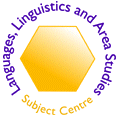
|
|
Book Review: Information Technology in English Language LearningProceedings of the Conference organised by The Division of English Language & Applied Linguistics, National Institute of Education and The Society of Reading & Literacy, Singapore 11-13 September 1997. Edited by Gloria Poedjosoedarmo and June Imada Lee. ISBN: 981-3025-10-7 These proceedings demonstrate once again the global dimension of CALL (or TELL, or ITELL, cf. the conference title). Thousands of professionals are actively engaged in exploiting information technology (IT) worldwide in one way or another for language learning and teaching. Interestingly enough, the emerging educational and technical trends are very often strikingly similar, be it in Asia, Europe or North America – and although some prominence is given to the Asian perspective, some of these global trends are captured in this volume. The ITELL brought together 40 speakers from 11 countries. 17 papers have been selected for these proceedings and grouped into four sections: invited speakers from abroad (5 papers), local schools and ministries (4), local polytechnics (3) and teacher trainers, both from Singapore and from abroad (5). The Proceedings have been produced in an attractive layout; the spacious font and wealth of screenshots, tables and illustrations give it the look and feel of a ‘real’ book. Given the conference title, it is hardly surprising to find a wide range of topics encompassing Internet projects in the British primary sector, tertiary education in Australia, a historical overview of language centre developments, the evolution of video technologies in CALL, a mainly technical description of the ‘ideal classroom computer’ and a largely linguistic account of computer roles in the writing classroom. I cannot deal with all the papers here (the editors do a good job in outlining them all in their introduction, pp. 2-6), and some are clearly superior to others in terms of their sophistication and underlying expertise. Let me pick out one out of each of the above-mentioned four sections and thereby draw your attention to some of the highlights of this volume. Martin Tibbetts gives us in his paper ‘From Cassette to Cyberspace’ (pp. 63-88) a very lively and stimulating account of some word processing, database and Internet-based case studies with nine- to twelve-year-olds in the UK, all emphasizing the tool (vs. tutor) role of the computer, and hence submitting evidence that such complex classroom projects do work out even at that age if they are well-prepared and realistic. However, Tibbetts is aware of the pitfalls (eg chatting online!), and reminds us: "IT has its place but PUT it in its place! If you don't need the computer, for goodness sake turn it off!" His final piece of advice should make us think of our own teaching efforts in general and CALL efforts in particular (if applicable): "Think back to the few lessons that you actually remember from your school days. Identify what it was about them that causes you to remember them. The chances are that they were creative, interactive, relevant to your needs at the time and exciting. Those learning needs have not changed and will not change in the 21st century." Mark DeWolf's paper, ‘Re-thinking the classroom computer’ (pp. 112-122), addresses the important question whether the currently widely available computers, i.e. Windows-PCs or Macs, are adequate hardware solutions and software platforms for today's classroom needs. Starting from the simple but crucial statement, "no learning will take place if the machines give you trouble", his answer to this question is clearly "No". DeWolf raises a number of important points to substantiate his position and goes on to plead for the development of a specifically designed low-budget classroom computer which, together with equally adequate educational software, would meet the essential constraints of and needs for classroom use. Lilian Lee's paper on ‘E-Mail: Boon or Bane?’ (pp. 125-135) discusses a twinning e-mail project between Singapore Polytechnic and the University of Texas at El Paso. E-mail correspondence is probably one of the most powerful and promising new areas in CALL and what makes Lee's account of it particularly interesting is the integration of online marking via a customized database of corrective feedback. The paper deals with this critical issue of error treatment in e-mail projects. Hedy McGarrell's and Gloria Poedjosoedarmo's paper concerns itself with ‘The Role of Information Technology in the Teaching of Writing in English in a Multilingual Environment’ (pp. 196-212). Despite this wordy title, their framework for investigating IT and writing in the classroom is very straightforward: Following a ‘process’ approach to writing they centre possible IT functions around the stages of the writing process – pre-writing, drafting, revising, editing, publishing – clearly basing their proposals on extensive experience. What makes their paper pleasant to read is their matter-of-factness in relation to the promises and limits of IT and their openness towards potential problems. This last comment finally leads me to my only substantial criticism of this volume. On two or three occasions in the proceedings this general down-to-earth and realistic frame of mind seems to give way to an over-trusting attitude towards IT. Some examples are the somewhat naive assumption that with the advent of the Internet, "presenting authentic and interesting materials is no longer a problem to language teachers" (p. 166); linguistic knowledge is thereby acquired unconsciously (p. 167); and the supposition that computerized, fully automatic essay corrections are already within reach (pp. 218). Nevertheless, reading the proceedings was for the most part informative and enjoyable – and unlike many Internet apologists, I believe that there is a future for printed conference proceedings. Markus Ritter
|
 |
 |